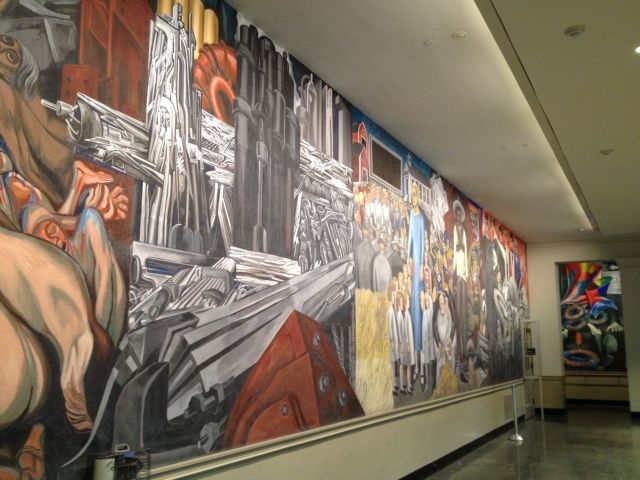
Jose Clemente Orozco created a mural series called The Epic of American Civilization at Dartmouth College in the 1930s when he was an artist in residence there. The work has now been designated a national historic landmark by the National Park Service.
The Mexican painter created 24 frescoes on the walls of a reading room in the library basement. The building has been renovated and visitors can trace the rise of American civilization as the evolution of a hemisphere.
The colorful, expressionistic cycle follows the immigration of native peoples in prehistoric times, to the arrival of the Europeans, and finally to the present state of American civilization.
On a recent afternoon Dartmouth art historian Mary Coffey stood before two panels that seem to critique the United States in the 1930s. One shows a country school house.
The scene is depicted "in a way that my students often describe as zombie-like, suggesting that there is something about our universal education system that produces something like a consensus mind," Coffey explained.
Right next to it, a panel shows a more hellish scene from Latin America.
"And here we see a world in tumult as we see a whole array of military and figures and businessmen circling around the solitary figure of a guerilla warrior who is clearly about to be assassinated by a U.S. general," Coffey said.
Coffey says Orozco’s pessimism was influenced by his times, and the specter of World War II on the horizon.
But he does end the series with a kind of coda mural, in which a working class man reclines, apparently in peace, reading a book– just as many Dartmouth students are doing here, in a library that’s now a national historic landmark.
Visitors to the library may use this audio guide by Professor Coffey to interpret the exhibit.